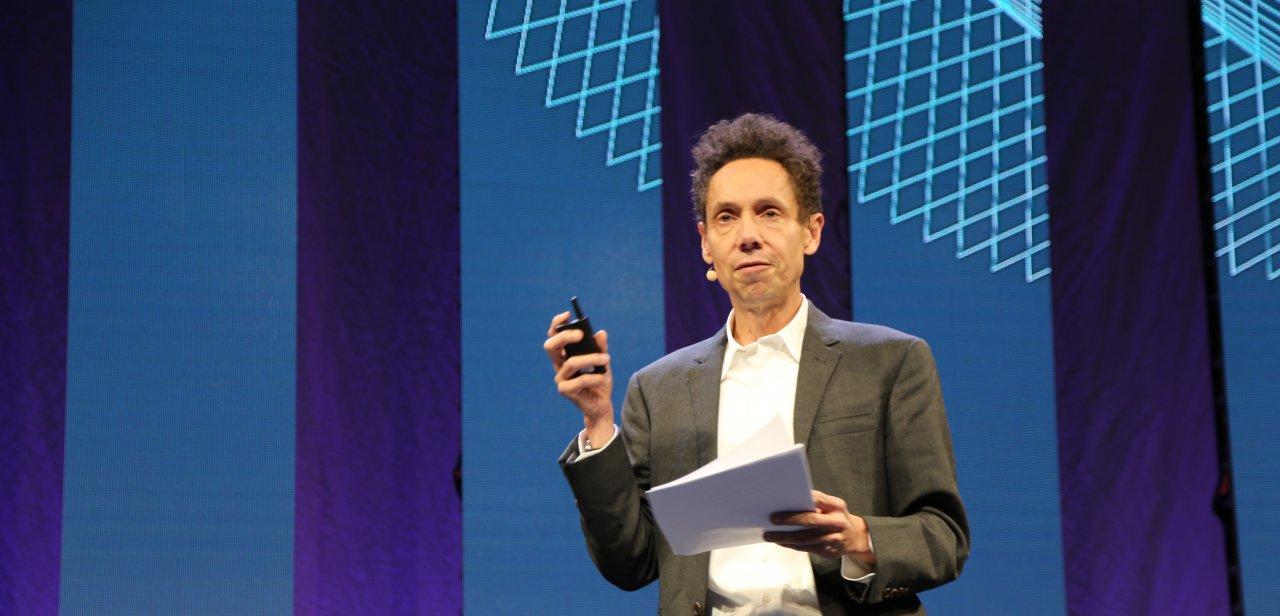Are You Approaching Customer Experience as a Puzzle or a Mystery?
Together with our clients, we are trying to understand what their customers think of their experiences. We aren’t just trying to solve for what they do well what they could do better, we are attempting to understand and give intelligence on how the myriad of digital and physical interactions with people, products, environments, etc.
The theme of this year’s CX Elevated conference, From Insights to Intelligence, represented our long-term vision for customer experience.
This vision includes the imperative all organizations have: moving from achieving insights into what customers think about their experiences toward a more comprehensive understanding of their conversations, emotions, and actions, and how that intelligence can impact the brand.
As we began planning our annual conference, our CEO, Andrew Joiner, left no doubt as to his pick for the primary keynote: Malcolm Gladwell, one of today’s brightest thought leaders and a New York Times bestselling author. . Previously, Andrew had seen Gladwell give a presentation on two fundamentally different approaches to “solving”: puzzles and mysteries.
In the case of a puzzle, you’re working with a lack of information. To solve for a puzzle situation you gather more data until you have all of the pieces and thus, the answer. In the case of mysteries, however, you have lots of data—too much, sometimes—and need special tools to locate the right signals amidst all of that noise. Mysteries don’t have a single right answer, but rather require creativity, curiosity, and discernment to solve.
When it comes to CX, we’re most definitely dealing with the latter paradigm. As Gladwell put it:
“In the collision of human beings and all of their complexities with data, you are surrounded by mysteries.”
To help us understand the way to approach mysteries, Gladwell provided three examples of challenges that would benefit from a mystery approach. My favorite example concerns professional basketball players and the way their value is measured.
It used to be that a pro basketball player’s value was determined simply by the number of points they scored. However this changed with the introduction of win share analysis. This new way of valuing players took into account other aspects that contribute to overall skill and performance. The new lense yielded entirely different results, enabling analysts to determine that most players peaked in their fourth year in the league. While this was more interesting, and probably helpful to teams and coaches, Gladwell observed that this process didn’t take into account the other “noise” or characteristics that sometimes contribute to a later, even greater personal best. When he approached this mystery differently, he found that variables such as player happiness and work ethic caused players like Gordon Hayward to play their personal best later in their careers than the league average. In this case, bringing in specific types of data and analyzing it in new ways kept players with great potential from being overlooked.
In this example, Gladwell was able to expertly describe to us the dangers of addressing human behavior as if it were a puzzle, which can lead to misinformation, bad answers, and missed opportunities.
So what does this have to do with customer experience? In a post-CX Elevated note to Pearl-Plaza staff, Andrew made the explicit connections:
“We hosted one of the great geniuses of our time — Malcolm Gladwell. His keynote at CXE was about how the world, especially in customer experience, is shifting away from traditional analytical constructs (a puzzle-based approach). His take is that they simply don’t work anymore. Asking more questions and producing more metrics won’t help our clients solve complex customer experiences. They need the right data and more intelligent technology — and that’s where Pearl-Plaza is helping.”
Together with our clients, we are trying to understand what their customers think of their experiences. We aren’t just trying to solve for what they do well what they
could do better, we are attempting to understand and give intelligence on how the myriad of digital and physical interactions with people, products, environments, etc. impacts the relationship between customer and brand. And more importantly, why. With those answers, we can help build brands in prioritizing their efforts, introducing new offerings, and forging high-value, lasting bonds with customers.
Throughout the rest of 2018 we’ll be introducing even more tools brands can use to successfully pursue the great mystery of customer experience. And while the mystery vs. puzzle approach is infinitely more complex, the business and human impact hold a positive potential that is both perplexing and incredibly exciting.
